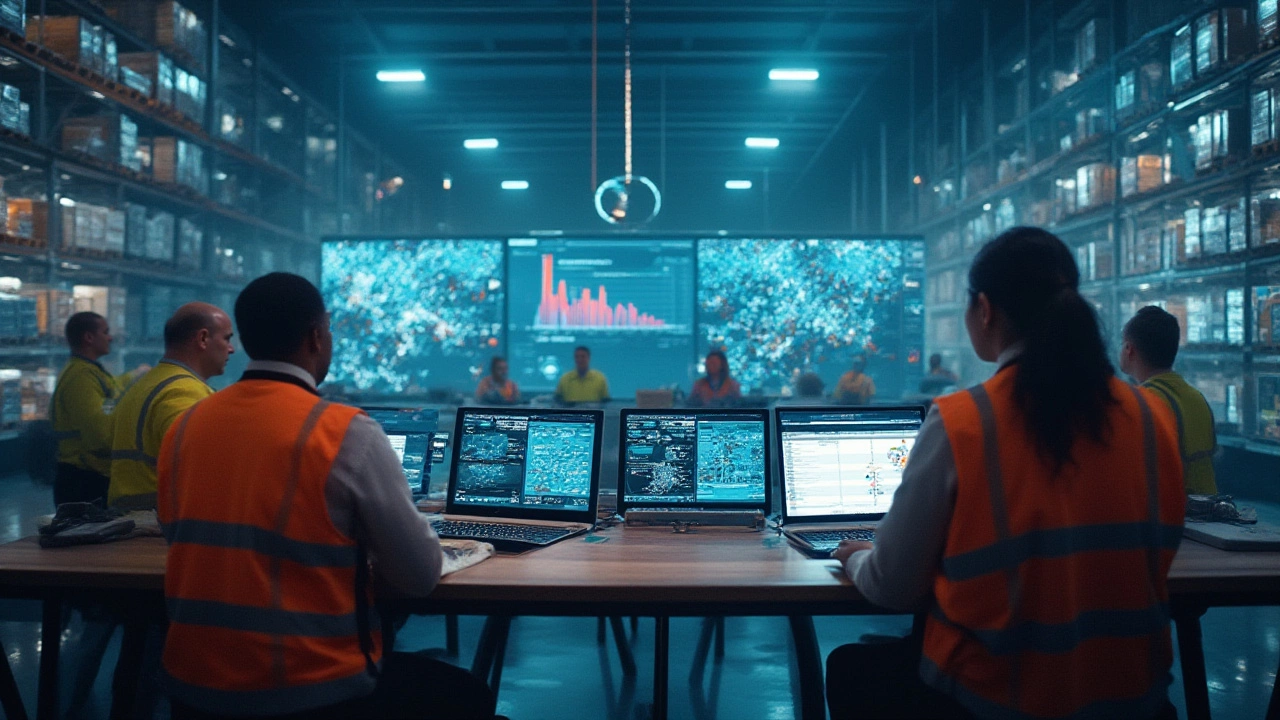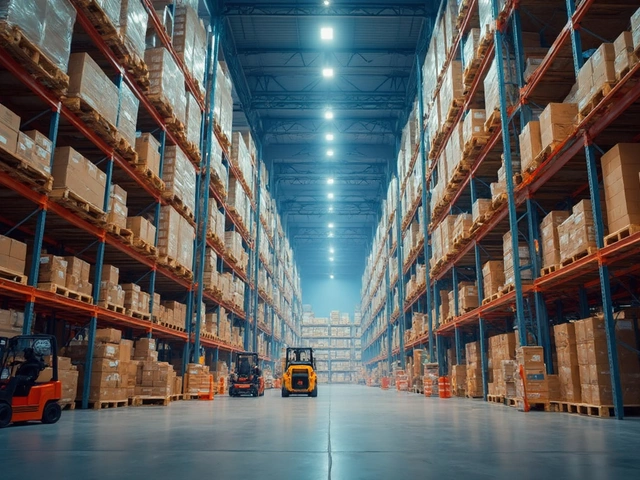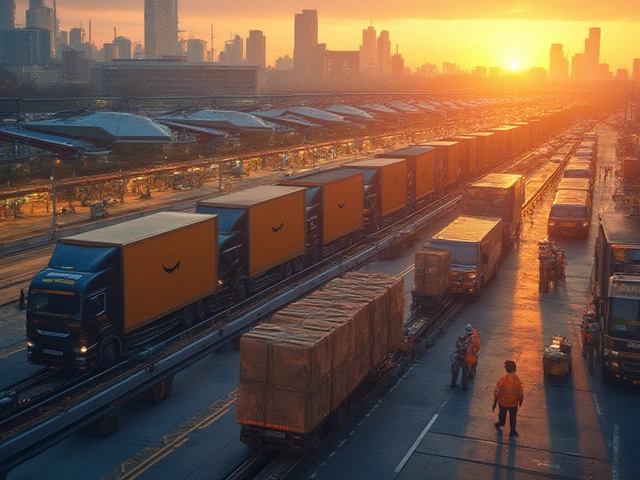Think delivering a parcel from Auckland to a tiny South Island town is easy? Actually, it can be a logistical nightmare. Trucks, ships, warehouses, custom forms, deadlines—the journey from warehouse shelf to doorstep is a web of moving parts. Yet here’s a fun fact: big retailers and transporters don’t run on caffeine and crossed fingers. They run on logistics software. When an online store promises your order will arrive next Friday (barring an earthquake), it’s mostly thanks to a smart behind-the-scenes system that tracks, predicts, and plans every single step. The wild part? Most customers have no idea how much brainpower goes into that simple “your order is on the way” email.
What Does Logistics Software Actually Do?
People love to joke about New Zealand’s four-seasons-in-a-day weather, but supply chains need to handle more storms than that. At its core, logistics software is like the conductor of a huge, unpredictable orchestra. Orders blink in from customers across the country (or the world). The software collects these orders, checks what’s in stock, decides which warehouse the order should come from, and even juggles the fastest shipping method—sometimes all within a fraction of a second.
Millions of parcels are delivered every day. If companies still relied on spreadsheets and sticky notes, the cost and chaos would be massive. Instead, logistics platforms like Manhattan Associates, JDA Software, or SAP help companies automate inventory tracking, purchasing, shipping, even reverse logistics (that’s the fancy way of saying returns). Some apps can predict busy periods, flag slow-moving stock, and suggest better delivery routes. Real-time data helps organisations make sharp decisions, slashing wasted trips and angry customer emails. In fact, a 2023 market report said businesses using advanced logistics solutions saw up to 23% faster average delivery times.
You think a classic warehouse looks busy, but today’s fulfillment centers are another planet: robots zipping down aisles, barcode scanners chattering, pallets whizzing down conveyor belts. All of it runs from logistics software at the nerve center. Basically, it handles anything involving products: buying them, storing them, moving them, and—if needed—finding them again and sending them back.
| Feature | What It Does |
|---|---|
| Order Management | Handles orders, status updates, and confirmations |
| Warehouse Control | Tracks goods, storage location, and inventory levels |
| Transport Management | Chooses carriers, routes, and oversees shipments |
| Supply Chain Visibility | Shows real-time location and condition of stock |
| Analytics & Metrics | Provides data for better planning and forecasting |
Logistics software even links with customs clearance, e-commerce systems, and payment gateways. Picture a central dashboard showing orders whizzing through: an urgent Auckland delivery gets a flag, while a mass restock for Dunedin pops up with an ETA. This level of detail helps companies avoid overstocking or running out of things people actually want.
The Key Pieces: How Logistics Software Fits Into the Supply Chain
Ever played with dominoes as a kid? Move one, and the rest all follow. That’s how logistics software weaves its magic—it keeps every domino perfectly balanced, from supplier to shopper. Here’s a closer look at its main roles:
- Inventory management: Like a memory game on steroids, logistics software tracks every sock, smartphone, or snack bar as it moves between supplier, warehouse, and customer. It sounds simple, but mistakes here snowball fast—a single missing SKU can ruin a Black Friday sale or delay a supermarket’s top product launch.
- Warehouse automation: Gone are the days of handwritten stock lists. Now, warehouse management systems (WMS) scan goods in and out, allocate optimal storage, and send robots scurrying off to pick and pack. Everything feeds seamlessly into the main logistics platform for transparent reporting.
- Transport management: Choosing a shipping method isn’t about picking the cheapest van or truck. It’s a constant puzzle. Transport management systems (TMS) weigh up cost, mileage, weather, delivery deadlines, and even vehicle availability, then calculate the smartest option. For example: Auckland to Wellington might be fastest with an overnight linehaul, but a rural drop-off might need a partner courier and a detour past a closed bridge. Flexibility is key.
- Order tracking and customer updates: That order confirmation and tracking link customers receive? It’s all powered by the logistics backend. The system pulls together real-time location data, estimated delivery windows, and proof of delivery—no more lost parcels or mystery delays.
- Supply chain integration: Most companies juggle dozens of separate apps for accounting, e-commerce, and HR. Logistics software acts as the glue, plugging into each one and keeping information flowing smoothly. This is especially critical for businesses dealing with multiple sales channels (think brick-and-mortar stores plus online marketplaces).
Every step you see above can run independently, but when they’re connected through a single software suite, accuracy and speed go up—while costs drop. Some platforms even let users model “what if” scenarios, like if an Auckland port faces a week-long shutdown. Businesses can reroute, warn customers, and move stock around rather than flying blind.
In New Zealand, with its scattered islands and challenging weather, companies lean especially hard on logistics software to make sure even tiny communities get their goods on time. The most advanced tools even tap into AI: they spot patterns, adjust stock around school holidays, or predict the fastest route when a once-in-50-year storm closes roads on the West Coast.

The Brainpower Behind the Scenes: Technology in Logistics Software
The magic starts with massive databases and clever algorithms. Modern logistics software runs on cloud platforms for a reason—they need to handle loads of real-time information coming from barcode scanners, GPS trackers, APIs, and more. The cloud not only keeps costs down (no racks of dusty servers to babysit) but also makes everything fast and accessible from anywhere—whether you’re in central Wellington or a remote warehouse surrounded by sheep.
The real trick? Machine learning and AI. Instead of following boring static rules, today’s top solutions learn from experience: which routes are reliable, when spikes in orders hit, and how delays ripple through the system. Say there’s a detour south of Hamilton—the platform can compare historical data with current traffic, weather feeds, and driver schedules, then offer a new ETA and suggestion within seconds. That means logistics managers react in real time, not hours after the fact.
But it’s not just high-end algorithms at work. Even the basics matter: barcode scanning eliminates human error (fun fact: a 2022 study found barcodes dropped warehouse mistakes by up to 78%), while GPS tracking gives constant updates on exactly where a package is, rather than losing it in a black hole somewhere between depots.
The most sophisticated setups use the Internet of Things (IoT): sensors in each pallet, temperature monitors for chilled freight, and cameras to check cargo condition. All this data feeds back to the logistics hub and gives a live picture of the whole operation. It’s a far cry from “call Bob and ask if the truck’s arrived.”
Another thing—security is critical. With so much at stake (stock value, customer trust, regulatory rules), software includes layers of encryption, strict user permissions, and lightning-quick detection for anything that looks dodgy. Serious logistics platforms even track who accessed what information, when, and why.
What ties it all together is the interface. The most popular software isn’t just powerful, it’s also accessible to people who don’t have an IT background. Big dashboards, drag-and-drop planning, and instant alerts help managers keep calm even during Christmas rushes or unexpected disasters.
Real-World Wins: How Companies Use Logistics Software Smarter
Let’s skip the theory for a second and talk about what actually happens in real companies. Take The Warehouse Group, NZ’s retail giant: after switching to a new TMS, they shaved two days off delivery to remote communities, and complaints about shipment errors nosedived by 31%. Even fashion brands have jumped in—Barkers uses logistics software to restock its stores, matching supply with fickle Auckland shopper demand, especially after big weekend sales events.
There’s a myth that logistics tech is only for multinationals with seven-figure budgets. But smaller companies use adapted versions to punch above their weight. Niche cheese shops, bike delivery startups, even family-run online book stores—most run on cloud-based supply chain management tools that plug straight into their e-commerce platforms. A Cambridge-based brewery reported saving 12% annually in shipping costs just by using smarter route planning software.
Looking at bigger trends, sustainability is a huge motivator for tech adoption. By fine-tuning delivery routes and cutting back on half-empty trucks, logistics software can shrink a business’s carbon footprint without sacrificing speed. Mainfreight and Fonterra are both known for tools that model energy efficiency, from fuel burn to warehouse lighting schedules.
So what’s next? AI and predictive analytics are just warming up. Local tech startups are pushing new platforms that not only manage your inventory but automatically reorder supplies before you ever get low. Some even integrate smart contracts: when a shipment arrives, payment, customs clearance, and receipts all process automatically.
If you’re weighing whether to invest in logistics software, here’s a quick tip: ask suppliers to show not only what the system does but *how* easy it is to get actionable insights. A system can have 100 features, but if your staff struggles to find “where’s my stuff?” during a mad rush, all that shiny tech won’t help. Look for transparent tracking, simple reporting, and rock-solid customer support. And always demand integrations with whatever e-commerce or accounting tools you already use—otherwise, you’ll be left copying and pasting, which costs time and energy you could spend growing instead.
The next time you receive a parcel on your doorstep, remember it’s not just plane rides and petrol that got it to you. It’s software—crunching data, dodging obstacles, and constantly learning—keeping New Zealand’s supply chains humming, rain or shine.





